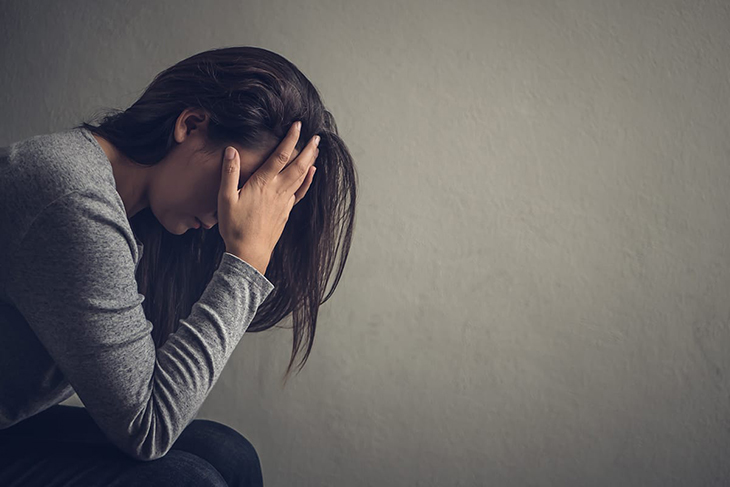
Many of those who have gone through hazardous events and major disasters have reported to feeling anxiety and depression. These were reported from those who have been under duress over the past five years because of events such as hurricanes and tornadoes.
There’s an old adage that says, “What doesn’t kill you makes you stronger.” While this is applicable in so many ways, this can also be untrue for some. Many have said that their mental wellness took a turn after surviving disastrous events.
According to a study that was published in the journal Natural Hazards, people who were constantly exposed to major disasters had lower mental health scores compared to what’s expected at national levels. The study on major disasters and mental health and its findings confirm what researchers saw in earlier studies, says lead author Garett Sansom, DrPH, research assistant professor in the department of environmental and occupational health at the School of Public Health at Texas A&M University in College Station, Texas.
Dr. Sansom said, “We found that as people experienced more hazards, especially over the course of 5 or 10 years, their mental health tends to decrease over time. That’s not abnormal. It’s a normal reaction, and seeking help for that can be courageous.”
Study Looked Into Participants’ Energy Levels, Mood, and Interaction With Other People
From the years 2000 to 2020, Texans experienced a total of what 33 Federal Emergency Management Agency (FEMA) declared as major disasters. They then focused on individuals from the Houston area because they had been hit with hurricanes, winter weather, drought, and flooding. They were also exposed to human-caused disastrous events like explosions and chemical releases at the nearby industrial facilities.
In order to execute the research, they used a 12-item short form health survey to collect data and information regarding the impact from exposure. They then evaluated the changes over time and produced a composite score for both mental (MCS) and physical (PCS) health. The questionnaire asked about energy level, mood, and the desire to interact with people.
The majority of the 1,094 participants reported to going through a variety of hazardous events over the last five years. Nearly a hundred percent of participants (a total of 96 percent) experienced hurricanes, flooding, and industrial fires, 87 percent of them have witnessed chemical spills, and 80 percent of them have seen and experienced a tornado.
Investigators had come up with interesting findings and saw that when these people go through two or more events over the past five years, their MCS averages had fallen lower than the expected national levels. They also found that the more they go through these traumatizing and hazardous events, the lower their mental health scores were.
The researchers came up with a few conclusions during the study. They say that it’s very common and normal to have mental health struggles after experiencing a hazardous event. Dr. Sansom explained it further and said, “A lot of people choose to not seek out mental health care, typically due to stigma associated with that. Although that stigma has declined in recent years, it’s still exists.”
Everyone needs to realize that they need help after being traumatized. They can cope better if they seek out mental health care. This is normal and more importantly, they and their families can benefit from all these. Sansom also believes how these findings should be utilized by the public health officials in the area and everywhere. “Mental health is often overlooked in responding to and preparing for hazard exposures. Organizations and communities need to work to provide mental health help and support after these kinds of events,” Sansom explained.
Having Feelings of Anxiety and Depression After a Natural Disaster Is Normal
A lot of research has been conducted about what happens to those who experience natural disasters. Steven Scoggin, PsyD, assistant professor and psychiatrist at Atrium Health Wake Forest Baptist in Winston Salem, North Carolina, talked about it.
“In the days or hours before a natural disaster such as a hurricane or flood, people can actually be on a ‘high.’ The adrenaline gets pumping as people mobilize their energy and efforts,” said Dr. Scoggin. He added, “Then the disaster occurs, and the rebuilding phase begins, he says. About six months to a year after the disaster we see higher rates of depression and anxiety.”
Although the Pandemic is Not a Natural Disaster, It Still Takes a Toll on People’s Mental Health
The pandemic is far from being a natural disaster. First of all, this event comes with no clear beginning and no clear ending, explained Scoggin. “There was no ‘pre-warning,’ for us to prepare, and there’s been no clear hit. It continues to come and go, come and go, come and go, which has exacerbated the mental health effects,” he said.
“We’re seeing people’s cortisol, which is a stress hormone, stays up for a prolonged period of time, which we know wears on you physically, emotionally, socially, and spiritually over time,” he explained.
“The grit approach and trying to be strong all the time isn’t necessarily the best approach at a time like this,” Scoggin also said. “Trauma has its own effects on the brain, and we need to pay attention to those effects rather than just trying to push through.”
these would be to first name what’s going on and to be more aware about what’s happening to both the body and mind, he said as he talked about it. He further shed light on the solutions and said, “Talk with loved ones or even seek out a mental health professional if you need to.”
Sansom has voiced concern for the mental health of people as they experience the pandemic and its impact all over. “We collected the data for this study immediately prior to the pandemic. We are concerned that the already significant mental health issues we found will be exacerbated as a result of COVID-19,” he said.



